But a major shake-up in 1959 saw Buick making a bold move to win back customers by replacing its entire line-up with new and improved models, including the iconic LeSabre, Electra, and Invicta. The 1961 LeSabre in particular stood out as the workhorse of Buick’s comeback, helping to steer the brand towards a brighter future in the carmaking business.
When Buick raised the sword and called all its models to arms, it wasn’t just a poetic metaphor but also a metal-clad ideation. The Buick LeSabre led the General Motors division’s comeback; its name is self-explanatory.
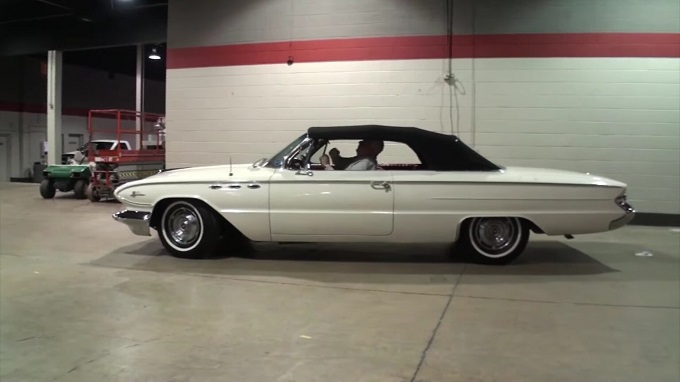
Although not the originator of the moniker, Buick adopted the name for its new model in 1959, borrowing the designation of the 1951 General Motors Le Sabre concept car. The only difference between the two labels is that the concept car is spelled as two words, while the production car lacks the space between the “Le” and “Sabre.”
The new title caught buyers’ attention. Buick patted itself on the back and continued the model with the second generation, launched in 1961. That year also saw a drastic refreshment of corporate design language. The rounded, voluptuous shapes of the 50s (by then already two decades in use) gave way to flatter, less voluminous contours.
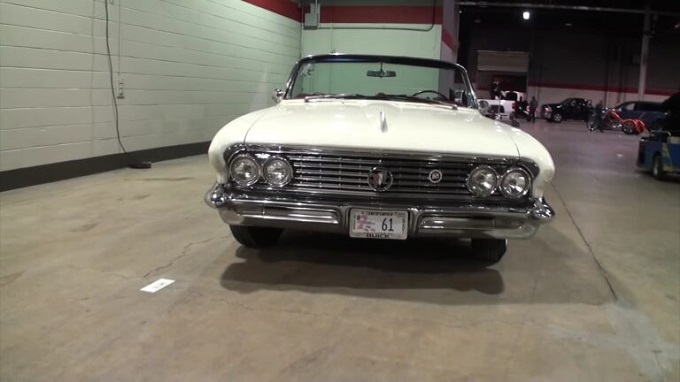
The LeSabre of 1961 featured a sleek, low, nearly flat sideline with very discrete sheet metal warping and simple geometry. General Motors aimed high by staying low, and Buick conformed to the dictum. The car features large surfaces of uninterrupted straight lines, significantly less chrome than its predecessors, and temperance in ornaments (ab)use.
The boisterous jet-age-inspired cars were retired in favor of the new, straightforward automobiles. American carmakers felt it was time to stop paying homage to other wonder-kid achievements of its industrial might. They focused on making the car the game’s main star. The Golden Age of American automotive was dawning.
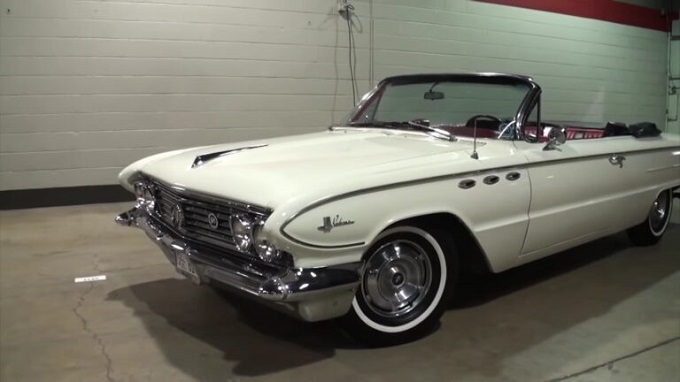
Buick wasn’t shedding just its skin in ’61 but also transplanting firepower under its model’s fresh bodies. The 364 cubes (6.0 liters) Nailhead V8 had already established itself as a diligent powerplant for the LeSabre during the first generation.
Accompanying the restyling shift of 1961 were a small-block 300-CID (4.9-liter) V8 and a 401 cubic-inch (6.6 liters) top-tier powerhouse. The middle-of-the-road eight-pot 364 CID motor was the preferred choice, balancing performance and economy in equal servings.
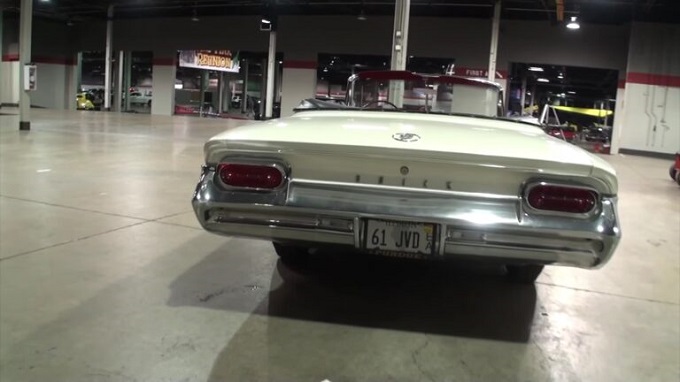
The engine’s output varied between 235 hp (238 PS) and 375 lb-ft (509 Nm) in the conservative two-barrel carburetor architecture to a more enticing 300 hp (305 PS) and 405 lb-ft (549 Nm) in the four-barrel Power Pack variant. An intermediate tuning, capable of 250 hp (254 PS) and 384 lb-ft (521 Nm), was the most popular choice.
Regardless of engine sizes and performances, all types sent power to the rear wheels via the Turbine Drive automatic two-speed gearbox. Buick took great pride in their new transmission due to its compact dimensions. Ditching the torque tube proved a wise engineering decision because it created more space in the cabin.
One of Buick Motor Division’s (BMD) adverts pointed out the extra flat floor space created using the “hideaway driveshaft.” Also, the absence of a floor-mounted gear lever gave the LeSabre a clean and roomy interior. This aspect allowed even the two-door-bodied versions to carry six passengers (as claimed by official sales literature of the epoch).
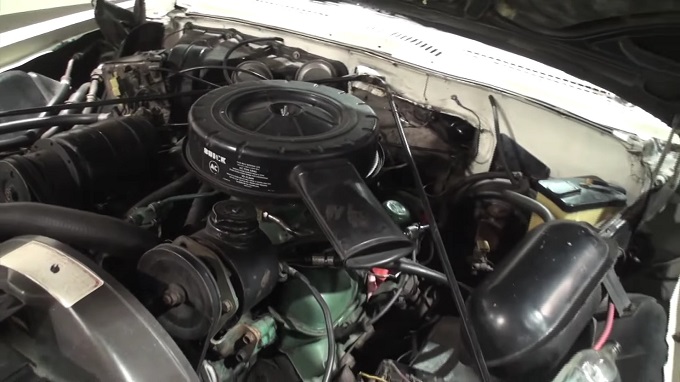
However, the salespeople from GM took into consideration six adult occupants. One particular Buick enthusiast fondly discovered that his beloved ’61 LeSabre could easily accommodate five of his grandchildren. And that’s just on the rear bench, as he confesses to the avid classic car vlogger Lou Costabile in the video at the end of this article.
The proud owner of this 1961 Buick LeSabre convertible fell in love with the make and model when he purchased his first car – care to guess what that was? – half a century ago. The Arctic white over red interior drop-top is simply stunning.
Not my assertion, but the same man’s most sincere and severe judicators’. Children from his neighborhood unanimously acclaim the LeSabre –the supreme expression of a car’s wow factor. If a 2023 kid approves of it, we can rest assured that the automobile is very high in Planet Piston’s sky.
After all, today’s cars aren’t nearly as cool as the classics of ages past. Look at the video and tell me what can beat the adjustable-angle speedometer that can be positioned to the driver’s height. Or that two-spoke steering wheel that will put a basketball basket to shame with its sheer size.
The 1961 LeSabre accounted for nearly 41% of Buick sales, with more than 113,000 units. The rag-top adorned the two-door body trim on almost 12,000 examples, and this here is one of the lucky few that made it to this day in such an excellent condition.
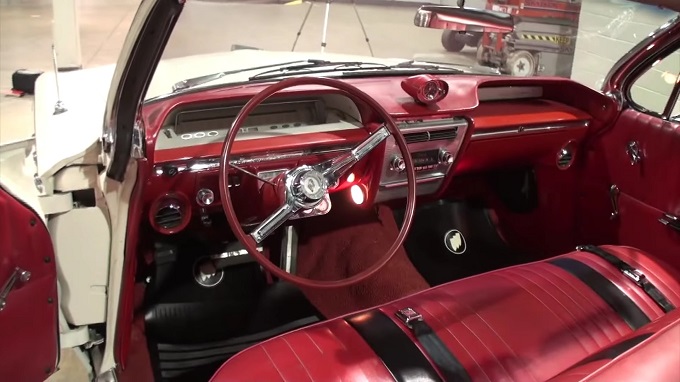
The Nailhead V8 wasn’t a muscle-oriented engine but was quick to burble under throttle. Listen to it in the video, purring at idle and then suddenly growling when the loud pedal gets some attention.
In 1961, the muscle car craze wasn’t yet sinking its teeth into the hearts of gearheads, so carmakers weren’t mainly oriented toward the tire-burning aspect. Other elements were treated with as much attention as the drivetrain, and the LeSabre offered several standard features.
It’s hard to imagine a time when electric windshield wipers and a full-flow oil filter were considered cutting-edge technology, but that’s exactly what the 1961 Buick LeSabre offered.
And with features like a “Mirromagic” instrument panel, dual sunshades, and Foamtex cushions, it’s clear that this car was designed with luxury in mind. So sit back, relax, and enjoy the ride – you’re driving a true classic.





